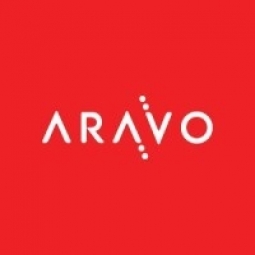技术
- 分析与建模 - 机器学习
- 平台即服务 (PaaS) - 应用开发平台
适用行业
- 水泥
- 建筑与基础设施
适用功能
- 维护
- 质量保证
用例
- 施工管理
- 基础设施检查
服务
- 数据科学服务
- 系统集成
关于客户
Finda 是韩国金融科技行业发展最快的初创公司之一。它利用通过 324 家金融公司的 MyData 许可证捕获的贷款相关数据,为客户提供有针对性的贷款服务。该公司提供来自 66 家银行和金融公司的 200 多种贷款产品。其使命是减少贷款障碍并使信贷获取民主化,从而推动更大的金融包容性。 Finda 在推动这一转型方面处于领先地位,通过改进风险管理、缩短承保时间和更轻松地获得信贷,对韩国经济产生了重大影响。
挑战
Finda 是韩国的一个数据驱动型借贷平台,由于数据量激增和数据用户增加,其在管理数据环境方面面临挑战。该公司复杂的数据环境由用于不同分析需求的不同分析系统组成,这使得为客户提取数据洞察和价值变得困难。由于可扩展性问题导致的频繁应用程序中断限制了其响应用户或操作活动突然增加的能力。该公司还面临数据工程活动的困扰,例如用于后端服务的服务数据库中的表创建、修改和删除。这吸收了宝贵的资源并影响了 SLA。核心问题是 Finda 的遗留数据仓库,其存储管理效率低下,导致运营成本失控。该系统还需要持续维护以同步两个存储环境上的数据目录。
解决方案
Finda 实施了 Databricks Lakehouse 平台,该解决方案结合了数据湖和数据仓库的最佳元素。该平台提供数据仓库的可靠性、强大的治理和性能以及数据湖的开放性、灵活性和机器学习支持。借助这种现代化的 Lakehouse 架构,Finda 现在可以在一个统一的视图中管理其数据、分析和人工智能工作的各个方面。由于消除了脱节的分析服务之间的孤岛,基础设施管理得到了简化。与内部 GitHub 环境集成可以更轻松地与团队成员共享分析结果,从而提高协作和跨团队生产力。借助 Delta Lake 和 Spark Streaming,Finda 极大地提高了大规模数据管道性能,同时不再需要运营其遗留数据仓库并消除了重复数据的需要,从而降低了运营成本。 Databricks Unity Catalog 允许 Finda 通过针对所有用户的细粒度访问控制来建立数据治理。
运营影响
数量效益

Case Study missing?
Start adding your own!
Register with your work email and create a new case study profile for your business.
相关案例.

Case Study
System 800xA at Indian Cement Plants
Chettinad Cement recognized that further efficiencies could be achieved in its cement manufacturing process. It looked to investing in comprehensive operational and control technologies to manage and derive productivity and energy efficiency gains from the assets on Line 2, their second plant in India.

Case Study
IoT System for Tunnel Construction
The Zenitaka Corporation ('Zenitaka') has two major business areas: its architectural business focuses on structures such as government buildings, office buildings, and commercial facilities, while its civil engineering business is targeted at structures such as tunnels, bridges and dams. Within these areas, there presented two issues that have always persisted in regard to the construction of mountain tunnels. These issues are 'improving safety" and "reducing energy consumption". Mountain tunnels construction requires a massive amount of electricity. This is because there are many kinds of electrical equipment being used day and night, including construction machinery, construction lighting, and ventilating fan. Despite this, the amount of power consumption is generally not tightly managed. In many cases, the exact amount of power consumption is only ascertained when the bill from the power company becomes available. Sometimes, corporations install demand-monitoring equipment to help curb the maximum power demanded. However, even in these cases, the devices only allow the total volume of power consumption to be ascertained, or they may issue warnings to prevent the contracted volume of power from being exceeded. In order to tackle the issue of reducing power consumption, it was first necessary to obtain an accurate breakdown of how much power was being used in each particular area. In other words, we needed to be able to visualize the amount of power being consumed. Safety, was also not being managed very rigorously. Even now, tunnel construction sites often use a 'name label' system for managing entry into the work site. Specifically, red labels with white reverse sides that bear the workers' names on both sides are displayed at the tunnel work site entrance. The workers themselves then flip the name label to the appropriate side when entering or exiting from the work site to indicate whether or not they are working inside the tunnel at any given time. If a worker forgets to flip his or her name label when entering or exiting from the tunnel, management cannot be performed effectively. In order to tackle the challenges mentioned above, Zenitaka decided to build a system that could improve the safety of tunnel construction as well as reduce the amount of power consumed. In other words, this new system would facilitate a clear picture of which workers were working in each location at the mountain tunnel construction site, as well as which processes were being carried out at those respective locations at any given time. The system would maintain the safety of all workers while also carefully controlling the electrical equipment to reduce unnecessary power consumption. Having decided on the concept, our next concern was whether there existed any kind of robust hardware that would not break down at the construction work site, that could move freely in response to changes in the working environment, and that could accurately detect workers and vehicles using radio frequency identification (RFID). Given that this system would involve many components that were new to Zenitaka, we decided to enlist the cooperation of E.I.Sol Co., Ltd. ('E.I.Sol') as our joint development partner, as they had provided us with a highly practical proposal.

Case Study
Splunk Partnership Ties Together Big Data & IoT Services
Splunk was faced with the need to meet emerging customer demands for interfacing IoT projects to its suite of services. The company required an IoT partner that would be able to easily and quickly integrate with its Splunk Enterprise platform, rather than allocating development resources and time to building out an IoT interface and application platform.

Case Study
Bridge monitoring in Hamburg Port
Kattwyk Bridge is used for both rail and road transport, and it has played an important role in the Port of Hamburg since 1973. However, the increasing pressure from traffic requires a monitoring solution. The goal of the project is to assess in real-time the bridge's status and dynamic responses to traffic and lift processes.

Case Study
Bellas Landscaping
Leading landscaping firm serving central Illinois streamlines operations with Samsara’s real-time fleet tracking solution: • 30+ vehicle fleet includes International Terrastar dump trucks and flatbeds, medium- and light-duty pickups from Ford and Chevrolet. Winter fleet includes of snow plows and salters.








